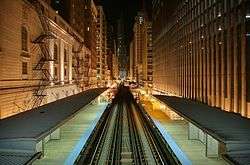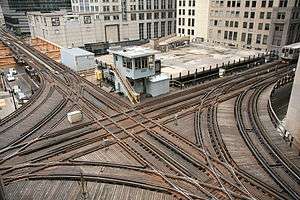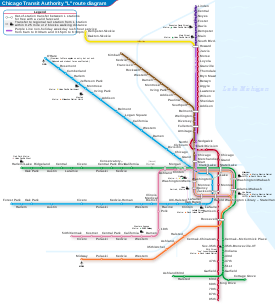Pink Line (CTA)
| Pink Line | ||||||||||||||||||||||||||||||||||||||||||||||||||||||||||||||||||||||||||||||||||||||||||||||||||||||||||||||||||||||||||||||||||||||||||||||||||||||||||||||||||||||||||||||||||||||||||||||||||||||||||||||||||||||||||||||||||||||||||||||||||||||||||||||||||||||||||||||||||||||||||||||||||||||||||||||||||||||||||||||||||||||||||||||||||||||||||||||||||||||||||||||||||||||||||||||||||||||||||||||||||||||||||||||||||||||||||||||||||||||||||||||||||||||||||||||||||||||||||||
|---|---|---|---|---|---|---|---|---|---|---|---|---|---|---|---|---|---|---|---|---|---|---|---|---|---|---|---|---|---|---|---|---|---|---|---|---|---|---|---|---|---|---|---|---|---|---|---|---|---|---|---|---|---|---|---|---|---|---|---|---|---|---|---|---|---|---|---|---|---|---|---|---|---|---|---|---|---|---|---|---|---|---|---|---|---|---|---|---|---|---|---|---|---|---|---|---|---|---|---|---|---|---|---|---|---|---|---|---|---|---|---|---|---|---|---|---|---|---|---|---|---|---|---|---|---|---|---|---|---|---|---|---|---|---|---|---|---|---|---|---|---|---|---|---|---|---|---|---|---|---|---|---|---|---|---|---|---|---|---|---|---|---|---|---|---|---|---|---|---|---|---|---|---|---|---|---|---|---|---|---|---|---|---|---|---|---|---|---|---|---|---|---|---|---|---|---|---|---|---|---|---|---|---|---|---|---|---|---|---|---|---|---|---|---|---|---|---|---|---|---|---|---|---|---|---|---|---|---|---|---|---|---|---|---|---|---|---|---|---|---|---|---|---|---|---|---|---|---|---|---|---|---|---|---|---|---|---|---|---|---|---|---|---|---|---|---|---|---|---|---|---|---|---|---|---|---|---|---|---|---|---|---|---|---|---|---|---|---|---|---|---|---|---|---|---|---|---|---|---|---|---|---|---|---|---|---|---|---|---|---|---|---|---|---|---|---|---|---|---|---|---|---|---|---|---|---|---|---|---|---|---|---|---|---|---|---|---|---|---|---|---|---|---|---|---|---|---|---|---|---|---|---|---|---|---|---|---|---|---|---|---|---|---|---|---|---|---|---|---|---|---|---|---|---|---|---|---|---|---|---|---|---|---|---|---|---|---|---|---|---|---|---|---|---|---|---|---|---|---|---|---|---|---|---|---|---|---|---|---|---|---|---|---|---|---|---|---|---|---|---|---|---|---|---|---|---|---|---|---|---|---|---|---|---|---|---|---|---|---|---|---|---|---|---|---|---|---|---|---|---|---|---|---|---|---|---|---|---|---|---|---|---|---|---|---|---|---|---|---|---|---|---|---|---|---|---|
 A Pink Line train of 5000-series cars. | ||||||||||||||||||||||||||||||||||||||||||||||||||||||||||||||||||||||||||||||||||||||||||||||||||||||||||||||||||||||||||||||||||||||||||||||||||||||||||||||||||||||||||||||||||||||||||||||||||||||||||||||||||||||||||||||||||||||||||||||||||||||||||||||||||||||||||||||||||||||||||||||||||||||||||||||||||||||||||||||||||||||||||||||||||||||||||||||||||||||||||||||||||||||||||||||||||||||||||||||||||||||||||||||||||||||||||||||||||||||||||||||||||||||||||||||||||||||||||||
| Overview | ||||||||||||||||||||||||||||||||||||||||||||||||||||||||||||||||||||||||||||||||||||||||||||||||||||||||||||||||||||||||||||||||||||||||||||||||||||||||||||||||||||||||||||||||||||||||||||||||||||||||||||||||||||||||||||||||||||||||||||||||||||||||||||||||||||||||||||||||||||||||||||||||||||||||||||||||||||||||||||||||||||||||||||||||||||||||||||||||||||||||||||||||||||||||||||||||||||||||||||||||||||||||||||||||||||||||||||||||||||||||||||||||||||||||||||||||||||||||||||
| Type | Rapid transit | |||||||||||||||||||||||||||||||||||||||||||||||||||||||||||||||||||||||||||||||||||||||||||||||||||||||||||||||||||||||||||||||||||||||||||||||||||||||||||||||||||||||||||||||||||||||||||||||||||||||||||||||||||||||||||||||||||||||||||||||||||||||||||||||||||||||||||||||||||||||||||||||||||||||||||||||||||||||||||||||||||||||||||||||||||||||||||||||||||||||||||||||||||||||||||||||||||||||||||||||||||||||||||||||||||||||||||||||||||||||||||||||||||||||||||||||||||||||||||
| System | Chicago "L" | |||||||||||||||||||||||||||||||||||||||||||||||||||||||||||||||||||||||||||||||||||||||||||||||||||||||||||||||||||||||||||||||||||||||||||||||||||||||||||||||||||||||||||||||||||||||||||||||||||||||||||||||||||||||||||||||||||||||||||||||||||||||||||||||||||||||||||||||||||||||||||||||||||||||||||||||||||||||||||||||||||||||||||||||||||||||||||||||||||||||||||||||||||||||||||||||||||||||||||||||||||||||||||||||||||||||||||||||||||||||||||||||||||||||||||||||||||||||||||
| Status | Operational | |||||||||||||||||||||||||||||||||||||||||||||||||||||||||||||||||||||||||||||||||||||||||||||||||||||||||||||||||||||||||||||||||||||||||||||||||||||||||||||||||||||||||||||||||||||||||||||||||||||||||||||||||||||||||||||||||||||||||||||||||||||||||||||||||||||||||||||||||||||||||||||||||||||||||||||||||||||||||||||||||||||||||||||||||||||||||||||||||||||||||||||||||||||||||||||||||||||||||||||||||||||||||||||||||||||||||||||||||||||||||||||||||||||||||||||||||||||||||||
| Locale | Chicago and Cicero, Illinois, United States | |||||||||||||||||||||||||||||||||||||||||||||||||||||||||||||||||||||||||||||||||||||||||||||||||||||||||||||||||||||||||||||||||||||||||||||||||||||||||||||||||||||||||||||||||||||||||||||||||||||||||||||||||||||||||||||||||||||||||||||||||||||||||||||||||||||||||||||||||||||||||||||||||||||||||||||||||||||||||||||||||||||||||||||||||||||||||||||||||||||||||||||||||||||||||||||||||||||||||||||||||||||||||||||||||||||||||||||||||||||||||||||||||||||||||||||||||||||||||||
| Termini |
54th/Cermak The Loop | |||||||||||||||||||||||||||||||||||||||||||||||||||||||||||||||||||||||||||||||||||||||||||||||||||||||||||||||||||||||||||||||||||||||||||||||||||||||||||||||||||||||||||||||||||||||||||||||||||||||||||||||||||||||||||||||||||||||||||||||||||||||||||||||||||||||||||||||||||||||||||||||||||||||||||||||||||||||||||||||||||||||||||||||||||||||||||||||||||||||||||||||||||||||||||||||||||||||||||||||||||||||||||||||||||||||||||||||||||||||||||||||||||||||||||||||||||||||||||
| Stations | 22 | |||||||||||||||||||||||||||||||||||||||||||||||||||||||||||||||||||||||||||||||||||||||||||||||||||||||||||||||||||||||||||||||||||||||||||||||||||||||||||||||||||||||||||||||||||||||||||||||||||||||||||||||||||||||||||||||||||||||||||||||||||||||||||||||||||||||||||||||||||||||||||||||||||||||||||||||||||||||||||||||||||||||||||||||||||||||||||||||||||||||||||||||||||||||||||||||||||||||||||||||||||||||||||||||||||||||||||||||||||||||||||||||||||||||||||||||||||||||||||
| Daily ridership |
33,737 (avg. weekday September 2012) | |||||||||||||||||||||||||||||||||||||||||||||||||||||||||||||||||||||||||||||||||||||||||||||||||||||||||||||||||||||||||||||||||||||||||||||||||||||||||||||||||||||||||||||||||||||||||||||||||||||||||||||||||||||||||||||||||||||||||||||||||||||||||||||||||||||||||||||||||||||||||||||||||||||||||||||||||||||||||||||||||||||||||||||||||||||||||||||||||||||||||||||||||||||||||||||||||||||||||||||||||||||||||||||||||||||||||||||||||||||||||||||||||||||||||||||||||||||||||||
| Operation | ||||||||||||||||||||||||||||||||||||||||||||||||||||||||||||||||||||||||||||||||||||||||||||||||||||||||||||||||||||||||||||||||||||||||||||||||||||||||||||||||||||||||||||||||||||||||||||||||||||||||||||||||||||||||||||||||||||||||||||||||||||||||||||||||||||||||||||||||||||||||||||||||||||||||||||||||||||||||||||||||||||||||||||||||||||||||||||||||||||||||||||||||||||||||||||||||||||||||||||||||||||||||||||||||||||||||||||||||||||||||||||||||||||||||||||||||||||||||||||
| Opened | June 25, 2006 | |||||||||||||||||||||||||||||||||||||||||||||||||||||||||||||||||||||||||||||||||||||||||||||||||||||||||||||||||||||||||||||||||||||||||||||||||||||||||||||||||||||||||||||||||||||||||||||||||||||||||||||||||||||||||||||||||||||||||||||||||||||||||||||||||||||||||||||||||||||||||||||||||||||||||||||||||||||||||||||||||||||||||||||||||||||||||||||||||||||||||||||||||||||||||||||||||||||||||||||||||||||||||||||||||||||||||||||||||||||||||||||||||||||||||||||||||||||||||||
| Operator(s) | Chicago Transit Authority | |||||||||||||||||||||||||||||||||||||||||||||||||||||||||||||||||||||||||||||||||||||||||||||||||||||||||||||||||||||||||||||||||||||||||||||||||||||||||||||||||||||||||||||||||||||||||||||||||||||||||||||||||||||||||||||||||||||||||||||||||||||||||||||||||||||||||||||||||||||||||||||||||||||||||||||||||||||||||||||||||||||||||||||||||||||||||||||||||||||||||||||||||||||||||||||||||||||||||||||||||||||||||||||||||||||||||||||||||||||||||||||||||||||||||||||||||||||||||||
| Character | Elevated and Street Level | |||||||||||||||||||||||||||||||||||||||||||||||||||||||||||||||||||||||||||||||||||||||||||||||||||||||||||||||||||||||||||||||||||||||||||||||||||||||||||||||||||||||||||||||||||||||||||||||||||||||||||||||||||||||||||||||||||||||||||||||||||||||||||||||||||||||||||||||||||||||||||||||||||||||||||||||||||||||||||||||||||||||||||||||||||||||||||||||||||||||||||||||||||||||||||||||||||||||||||||||||||||||||||||||||||||||||||||||||||||||||||||||||||||||||||||||||||||||||||
| Rolling stock | 5000-series | |||||||||||||||||||||||||||||||||||||||||||||||||||||||||||||||||||||||||||||||||||||||||||||||||||||||||||||||||||||||||||||||||||||||||||||||||||||||||||||||||||||||||||||||||||||||||||||||||||||||||||||||||||||||||||||||||||||||||||||||||||||||||||||||||||||||||||||||||||||||||||||||||||||||||||||||||||||||||||||||||||||||||||||||||||||||||||||||||||||||||||||||||||||||||||||||||||||||||||||||||||||||||||||||||||||||||||||||||||||||||||||||||||||||||||||||||||||||||||
| Technical | ||||||||||||||||||||||||||||||||||||||||||||||||||||||||||||||||||||||||||||||||||||||||||||||||||||||||||||||||||||||||||||||||||||||||||||||||||||||||||||||||||||||||||||||||||||||||||||||||||||||||||||||||||||||||||||||||||||||||||||||||||||||||||||||||||||||||||||||||||||||||||||||||||||||||||||||||||||||||||||||||||||||||||||||||||||||||||||||||||||||||||||||||||||||||||||||||||||||||||||||||||||||||||||||||||||||||||||||||||||||||||||||||||||||||||||||||||||||||||||
| Line length | 11.2 mi (18.0 km) | |||||||||||||||||||||||||||||||||||||||||||||||||||||||||||||||||||||||||||||||||||||||||||||||||||||||||||||||||||||||||||||||||||||||||||||||||||||||||||||||||||||||||||||||||||||||||||||||||||||||||||||||||||||||||||||||||||||||||||||||||||||||||||||||||||||||||||||||||||||||||||||||||||||||||||||||||||||||||||||||||||||||||||||||||||||||||||||||||||||||||||||||||||||||||||||||||||||||||||||||||||||||||||||||||||||||||||||||||||||||||||||||||||||||||||||||||||||||||||
| Track gauge | 4 ft 8 1⁄2 in (1,435 mm) | |||||||||||||||||||||||||||||||||||||||||||||||||||||||||||||||||||||||||||||||||||||||||||||||||||||||||||||||||||||||||||||||||||||||||||||||||||||||||||||||||||||||||||||||||||||||||||||||||||||||||||||||||||||||||||||||||||||||||||||||||||||||||||||||||||||||||||||||||||||||||||||||||||||||||||||||||||||||||||||||||||||||||||||||||||||||||||||||||||||||||||||||||||||||||||||||||||||||||||||||||||||||||||||||||||||||||||||||||||||||||||||||||||||||||||||||||||||||||||
| Minimum radius | 90 feet (27 m) | |||||||||||||||||||||||||||||||||||||||||||||||||||||||||||||||||||||||||||||||||||||||||||||||||||||||||||||||||||||||||||||||||||||||||||||||||||||||||||||||||||||||||||||||||||||||||||||||||||||||||||||||||||||||||||||||||||||||||||||||||||||||||||||||||||||||||||||||||||||||||||||||||||||||||||||||||||||||||||||||||||||||||||||||||||||||||||||||||||||||||||||||||||||||||||||||||||||||||||||||||||||||||||||||||||||||||||||||||||||||||||||||||||||||||||||||||||||||||||
| Electrification | Third rail, 600 V DC | |||||||||||||||||||||||||||||||||||||||||||||||||||||||||||||||||||||||||||||||||||||||||||||||||||||||||||||||||||||||||||||||||||||||||||||||||||||||||||||||||||||||||||||||||||||||||||||||||||||||||||||||||||||||||||||||||||||||||||||||||||||||||||||||||||||||||||||||||||||||||||||||||||||||||||||||||||||||||||||||||||||||||||||||||||||||||||||||||||||||||||||||||||||||||||||||||||||||||||||||||||||||||||||||||||||||||||||||||||||||||||||||||||||||||||||||||||||||||||
| ||||||||||||||||||||||||||||||||||||||||||||||||||||||||||||||||||||||||||||||||||||||||||||||||||||||||||||||||||||||||||||||||||||||||||||||||||||||||||||||||||||||||||||||||||||||||||||||||||||||||||||||||||||||||||||||||||||||||||||||||||||||||||||||||||||||||||||||||||||||||||||||||||||||||||||||||||||||||||||||||||||||||||||||||||||||||||||||||||||||||||||||||||||||||||||||||||||||||||||||||||||||||||||||||||||||||||||||||||||||||||||||||||||||||||||||||||||||||||||
The Pink Line is an 11.2 mi (18.0 km) rapid transit line in Chicago, run by the Chicago Transit Authority (CTA) as part of the Chicago "L" system. It is CTA's newest rail line and began operation for a 180-day trial period on June 25, 2006, running between 54th/Cermak Station in Cicero, Illinois and the Loop in downtown Chicago. The route to the Loop follows tracks shared with Green Line trains on Lake Street, connected by the previously non-revenue Paulina Connector. In September 2012, the average weekday boardings on the Pink Line was 33,737. The Pink Line does not make any 'L' train transfers on the Douglas Branch. The Pink Line operates between 54th/Cermak and the Loop, weekdays from 4:05 a.m. to 1:25 a.m., and Saturdays and Sundays from 5:05 a.m. to 1:25 a.m.
Initial proposal




In January 2006, the CTA held hearings on its proposal to reroute trains from 54th/Cermak via the recently rebuilt Paulina Connector to the Lake Street Green Line tracks, then operating around the Loop clockwise for the first time since Douglas trains began using the Milwaukee-Dearborn Subway in downtown Chicago on June 22, 1958. This would allow a doubling of Blue Line trains to Forest Park on the Congress Branch, since service would no longer be divided between the Forest Park and 54th/Cermak terminals. The CTA has also promised that service to/from 54th/Cermak would be increased 100% during weekday rush hours.
At the initial time of proposal, this plan was often referred to as the "Silver Line," as the original idea was to use gray as the line color on printed materials and give it the friendlier route name of "Silver."
On February 15, 2006, the CTA approved the separate plan.[1] Non-rush hour trains would be routed via the Loop, Green Line tracks and Paulina Connector. During weekday rush hours, service would be available on this routing as well as the original route via the Dearborn Street Subway every half hour. These changes went into effect beginning June 25, 2006, with the trial period scheduled to end 180 days later on December 22, 2006.
Operation
As the Blue Line Douglas Branch
Originally, Douglas trains were operated by the Metropolitan West Side Elevated directly into the Loop by means of the Metropolitan's main line. Construction of the Congress Street Superhighway (known now as the Eisenhower Expressway, I-290) in the 1950s required the removal of the Metropolitan's main line, resulting in Douglas trains being routed to the Loop via the Paulina Connector and the Lake Street "L" similar to the current service. Upon completion of the new Congress branch in the median of the expressway, all trains of the Douglas branch were operated via the Milwaukee-Dearborn Subway to the city's Northwest Side and to O'Hare International Airport. The entire Douglas Branch is ADA accessible.
Converting to the Pink Line
On March 30, 2006, the Chicago Transit Authority announced that of the top three colors, Pink, Gold and Silver, Pink had received the most votes in a write-in essay contest for Chicago-area schoolchildren in kindergarten through 8th grade—a $1,000 savings bond was awarded to a selected essay writer who advocated the color pink.[2]
The Pink Line began operation on June 25, 2006, using the rebuilt Paulina Connector which had not been used in regular revenue service for 48 years.
The service, which was originally set up as a temporary service to be run for a trial period of 180 days (6 months), doubles service on both the Douglas branch and the Forest Park branch of the Blue Line. This is accomplished by routing all but 12 trains per day coming from O'Hare to Forest Park and adding entirely new service from the 54th/Cermak terminal in Cicero to the Loop via the Paulina Connector and the Lake Street branch of the Green Line. Pink Line trains operate clockwise on the Inner Loop track via Lake-Wabash-Van Buren-Wells before returning to 54th/Cermak.
On December 12, 2006, the CTA board approved a six-month extension to the trial period before making a decision on whether or not to make the changes permanent,[3] and another 180-day extension was added to the trial in June 2007.[4] On December 4, 2008, CTA announced its decision to make the Pink Line permanent.[5]
Current routing
On the Pink Line, what was once the Blue Line's Douglas branch begins at 54th Avenue and Cermak Road in Cicero (5400 W. - 2200 S.). The line runs on at-grade tracks parallel to Cermak Road from the terminal to about a quarter-mile (400 m) east of Cicero Avenue, then diagonals northeast until it reaches a corridor parallel and adjacent to 21st Street at Kostner Avenue. It then continues east between 21st Street and Cullerton Street, climbing up from at-grade tracks to elevated tracks, through the North Lawndale, Little Village and Pilsen neighborhoods of Chicago, with stops at Kostner, Pulaski, Central Park, Kedzie, California, Western and Damen. The line turns north near Paulina Street stopping at 18th and Polk stations, then crosses over the Eisenhower Expressway (Interstate 290). Here, a two track non-revenue branch diverges that descends to the expressway to provide a non-revenue track connection to the Blue Line. It continues on the Paulina Connector to share tracks with the Green Line on Lake Street with stops at Ashland, Morgan and Clinton, before operating around the Loop clockwise.
Operating hours and headways
The Pink Line operates between 54th/Cermak and the Loop weekdays from 4 a.m. to 1:25 a.m., and weekends from 5 a.m. to 1:25 a.m. On weekdays, service runs every eight to ten minutes during rush hour, 12 minutes during midday, and 12-15 minutes at night. On Saturdays and Sundays, early minute service runs every 15 minutes, increasing to 12 minutes the rest of the day, with night service running every 15 minutes. Service after midnight runs every 20 minutes.[6]
Rolling stock
The Pink Line is operated with the Bombardier-built 5000-series railcars. Trains operate using four cars on weekdays and weekends. Frequently, the Pink and Green Lines borrow each other's cars when either line is short on cars. Also, since September 17, 2018, two cars sets assigned to the Pink Line make weekday rush hour trips on the Blue Line. The 5000-series cars returned to the Pink Line on May 7, 2012. At the time of their reintroduction, all Pink Line consists using 5000-series cars were six cars long. As of mid-August 2012, the Pink Line was using 5000-series cars in four and six car consists and with the successful testing of the Pink Line 5000-series cars in four car consists during August, the Pink Line reverted to running four cars during most times of the day (with some of the 5000-series cars that had been assigned to the line, were reassigned to the Green Line). The last 2600-series cars were removed from service from the Pink Line on June 8, 2012, making the Pink Line the first line to be fully equipped with the 5000-series cars. Most of the Pink Line's 2600-series cars were reassigned to the Blue Line to replace its 2200-series cars.
Possible route to Ravenswood
In 2002, the CTA proposed the creation of the "Circle Line", which would utilize segments of existing rail lines to keep new construction to a minimum, in addition to 6.6 miles (10.6 km) of new subway and elevated segments to the 'L' system to complete the circumferential route. Maps additionally suggested a possible extension of the existing Brown Line beyond the Loop to 54th/Cermak via the Green Line and the Paulina Connector, and Orange Line service from Chicago Midway International Airport to Kimball, as other potential routings using the new infrastructure. This project is currently undergoing a standard federally mandated alternatives analysis.
Station listing

| Station | Location | Municipality | Points of interest and notes |
|---|---|---|---|
| 54th/Cermak |
2151 S. 54th Avenue | Cicero | Auxiliary entrance at Laramie Points of interest: |
| Cicero |
2134 S. Cicero Avenue | Points of interest: Hawthorne Works | |
| Kostner |
2019 S. Kostner Avenue | Chicago | Originally "Kildare." Reopened as "Kostner" on July 17, 2003; Kildare converted into auxiliary entrance Points of interest: |
| Pulaski |
2021 S. Pulaski Road | Points of interest: North Lawndale and Homan Square | |
| Central Park |
1944 S. Central Park Avenue | Points of interest: South Lawndale and Little Village | |
| Kedzie |
1944 S. Kedzie Avenue | Points of interest: Douglas Park, Our Lady of Tepeyac High School, and WRLL Radio Station | |
| California |
2010 S. California Avenue | Points of interest: Douglas Park, Cook County Jail, Little Village, and Mount Sinai Medical Center | |
| Western |
2010 S. Western Avenue | Points of interest: Heart of Chicago, Heart of Italy, and St. Matthew Evangelical Lutheran School | |
| Damen |
2010 S. Damen Avenue | Originally "Hoyne." Reopened as "Damen" on July 22, 2004. Hoyne converted into auxiliary entrance Points of interest: | |
| 18th |
1710 W. 18th Street | Points of interest: Pilsen, St. Adalbert's, and Mexican Fine Arts Center Museum | |
| Polk |
1713 W. Polk Street | Points of interest: Illinois Medical District, University of Illinois at Chicago, Rush University, Rush University Medical Center, and Little Italy | |
| Ashland |
1601 W. Lake Street | Points of interest: United Center (Home of the Chicago Bulls and the Chicago Blackhawks) | |
| Morgan |
958 W. Lake Street | Points of interest: UIC, Harpo Studios, Greektown, Coyne College, Fulton-Randolph Market District | |
| Clinton |
540 W. Lake Street | Points of interest: Chicago Transit Authority Headquarters | |
| Clark/Lake |
100 W. Lake Street | Inner Loop platform Points of interest: | |
| State/Lake | 200 N. State Street | Inner Loop platform Points of interest: | |
| 151 N. Wabash Avenue | Closed September 3, 2017; demolished and replaced by Washington/Wabash | ||
| Washington/Wabash |
29 N. Wabash Avenue | Consolidation of Madison/Wabash and Randolph/Wabash. Opened August 31, 2017
Points of interest: | |
| Madison/Wabash | 2 N. Wabash Avenue | Closed March 16, 2015; demolished and replaced by Washington/Wabash | |
| Adams/Wabash | 201-23 S. Wabash Avenue | Inner Loop platform Points of interest: | |
| Harold Washington Library–State/Van Buren |
1 W. Van Buren Street | Inner Loop platform Points of interest: | |
| LaSalle/Van Buren | 121 W. Van Buren Street | Inner Loop platform Points of interest: | |
| Quincy | 220 S. Wells Street | Inner Loop platform Points of interest: | |
| Washington/Wells |
100 N. Wells Street | Inner Loop platform Points of interest: |
After stopping at Washington/Wells, Pink Line trains return to Clinton, then make all stops back to 54th/Cermak.
See also
References
- ↑ https://www.transitchicago.com/cta-board-approves-west-side-corridor-service-recommendations/?Month=2&Year=2006
- ↑ Chicago Transit Authority. And the color is... Pink Line. Last updated March 30, 2006. Retrieved March 30, 2006.
- ↑ https://www.transitchicago.com/cta-to-extend-west-side-service-experiment-adjust-11-lincolnsedgwick-and-add-132-goose-island/?Month=12&Year=2006
- ↑ "Agenda - Chicago Transit Board - Regular Meeting, June 13, 2007". Chicago Transit Authority. Archived from the original on 2008-01-24. Retrieved 2007-08-19.
- ↑ https://www.transitchicago.com/chicago-transit-board-approves-permanent-addition-of-west-sidewest-suburban-service-enhancements/?CategoryId=2&Year=2008&Month=12&pg=3
- ↑ "Pink Line Trains schedule" (PDF). Chicago Transit Authority. transitchicago.com. Retrieved June 3, 2018.
External links
Route map:
- Pink Line at CTA official site
- CTA Selects Winning Essay of Name the Line Contest - CTA Press Release on the Pink line